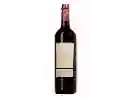
Winery Gérard BertrandPerles de Sauvignon Blanc
This wine generally goes well with vegetarian, rich fish (salmon, tuna etc) or shellfish.
Wine flavors and olphactive analysis
On the nose the Perles de Sauvignon Blanc of Winery Gérard Bertrand in the region of South West often reveals types of flavors of pineapple, cream or grapefruit and sometimes also flavors of tropical, citrus or apples.
Food and wine pairings with Perles de Sauvignon Blanc
Pairings that work perfectly with Perles de Sauvignon Blanc
Original food and wine pairings with Perles de Sauvignon Blanc
The Perles de Sauvignon Blanc of Winery Gérard Bertrand matches generally quite well with dishes of rich fish (salmon, tuna etc), shellfish or vegetarian such as recipes of half-cooked bluefin tuna, carri of shrimps with chillies or salmon and goat cheese quiche.
Details and technical informations about Winery Gérard Bertrand's Perles de Sauvignon Blanc.
Discover the grape variety: Epinou
A very old wine grape variety from the Auvergne vineyards. Today, it is practically no longer multiplied.
Last vintages of this wine
The best vintages of Perles de Sauvignon Blanc from Winery Gérard Bertrand are 2017, 2019, 2018, 2016 and 2015.
Informations about the Winery Gérard Bertrand
The Winery Gérard Bertrand is one of of the world's great estates. It offers 397 wines for sale in the of South West to come and discover on site or to buy online.
The wine region of South West
The South-West is a large territorial area of France, comprising the administrative regions of Aquitaine, Limousin and Midi-Pyrénées. However, as far as the French wine area is concerned, the South-West region is a little less clear-cut, as it excludes Bordeaux - a wine region so productive that it is de facto an area in its own right. The wines of the South West have a Long and eventful history. The local rivers play a key role, as they were the main trade routes to bring wines from traditional regions such as Cahors, Bergerac, Buzet and Gaillac to their markets.
The word of the wine: Vintage scale
Complex system of classification of the communes of Champagne according to the value of the grapes which are produced there. In other regions, hierarchical situation of the productions classified by various authorities.














